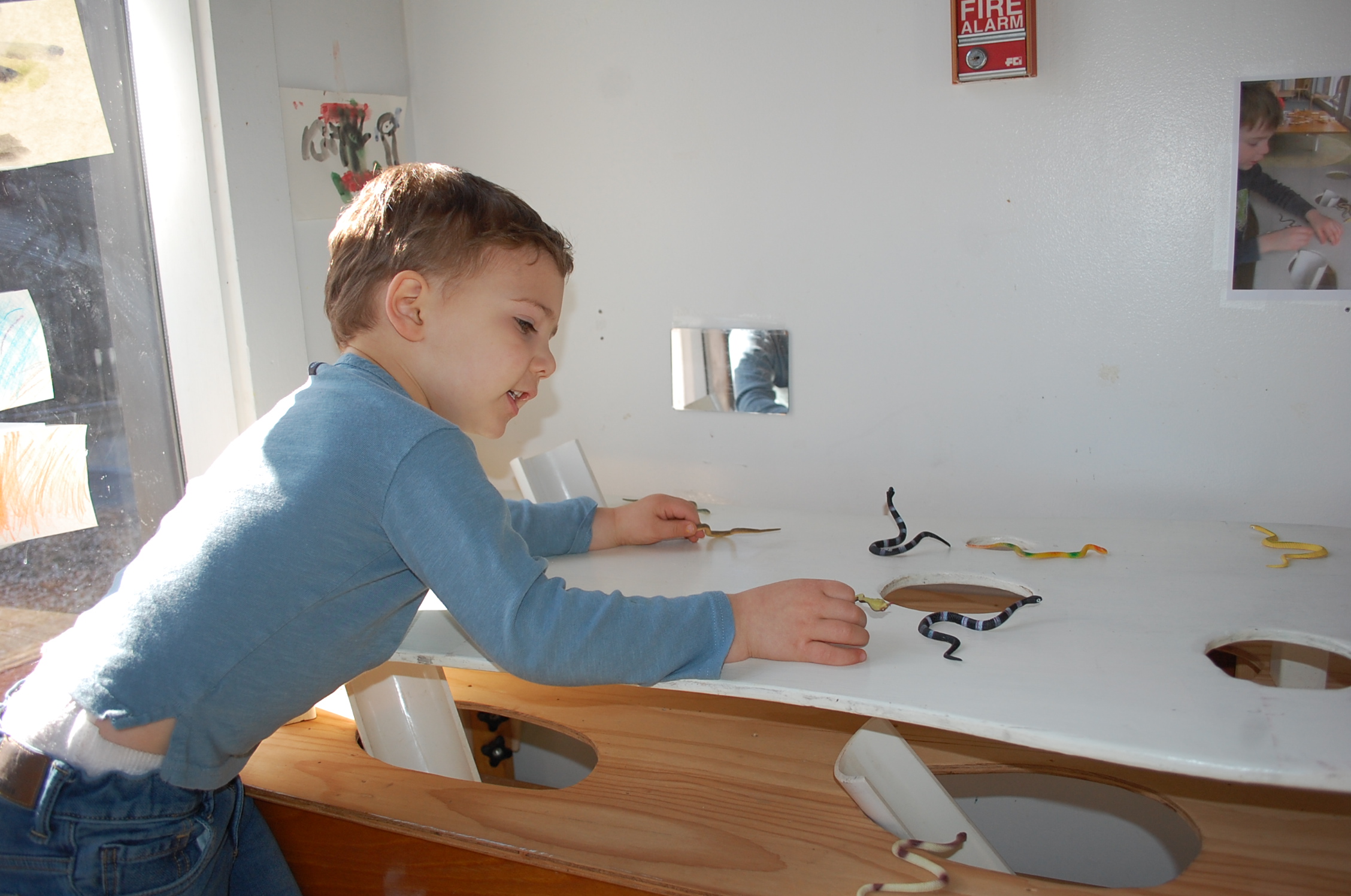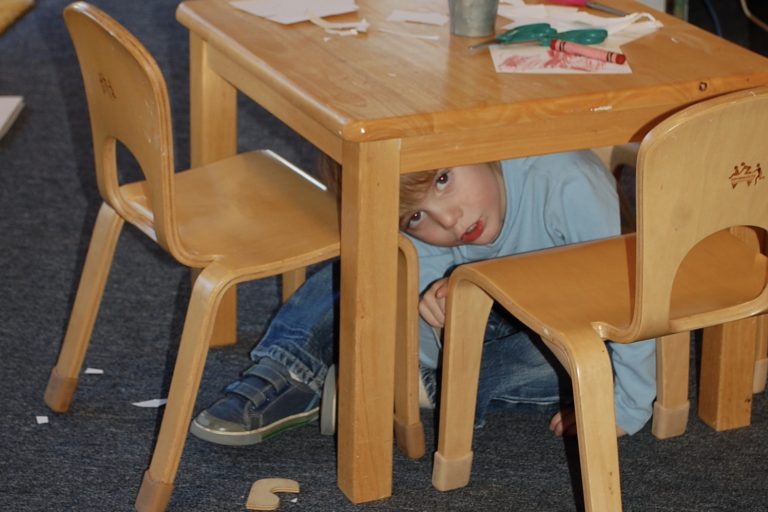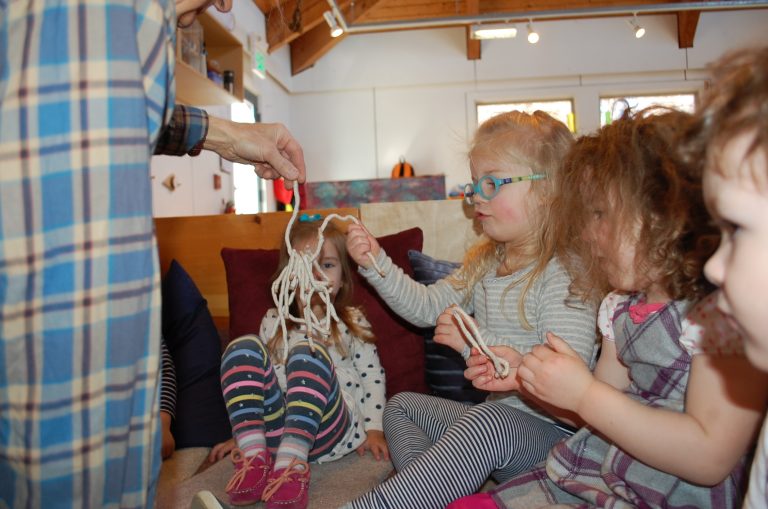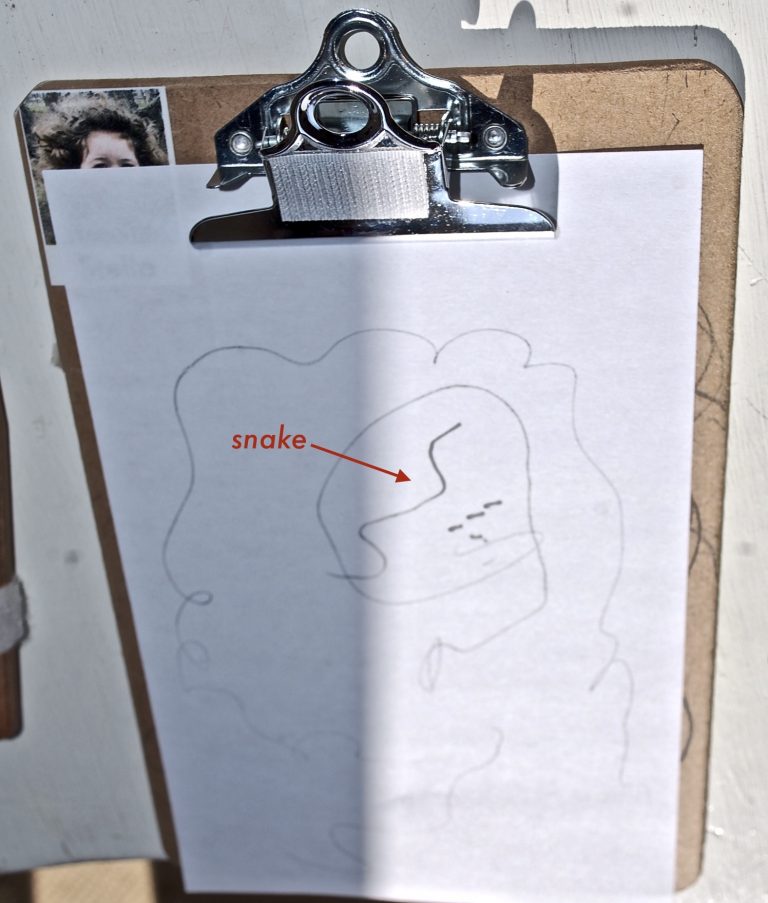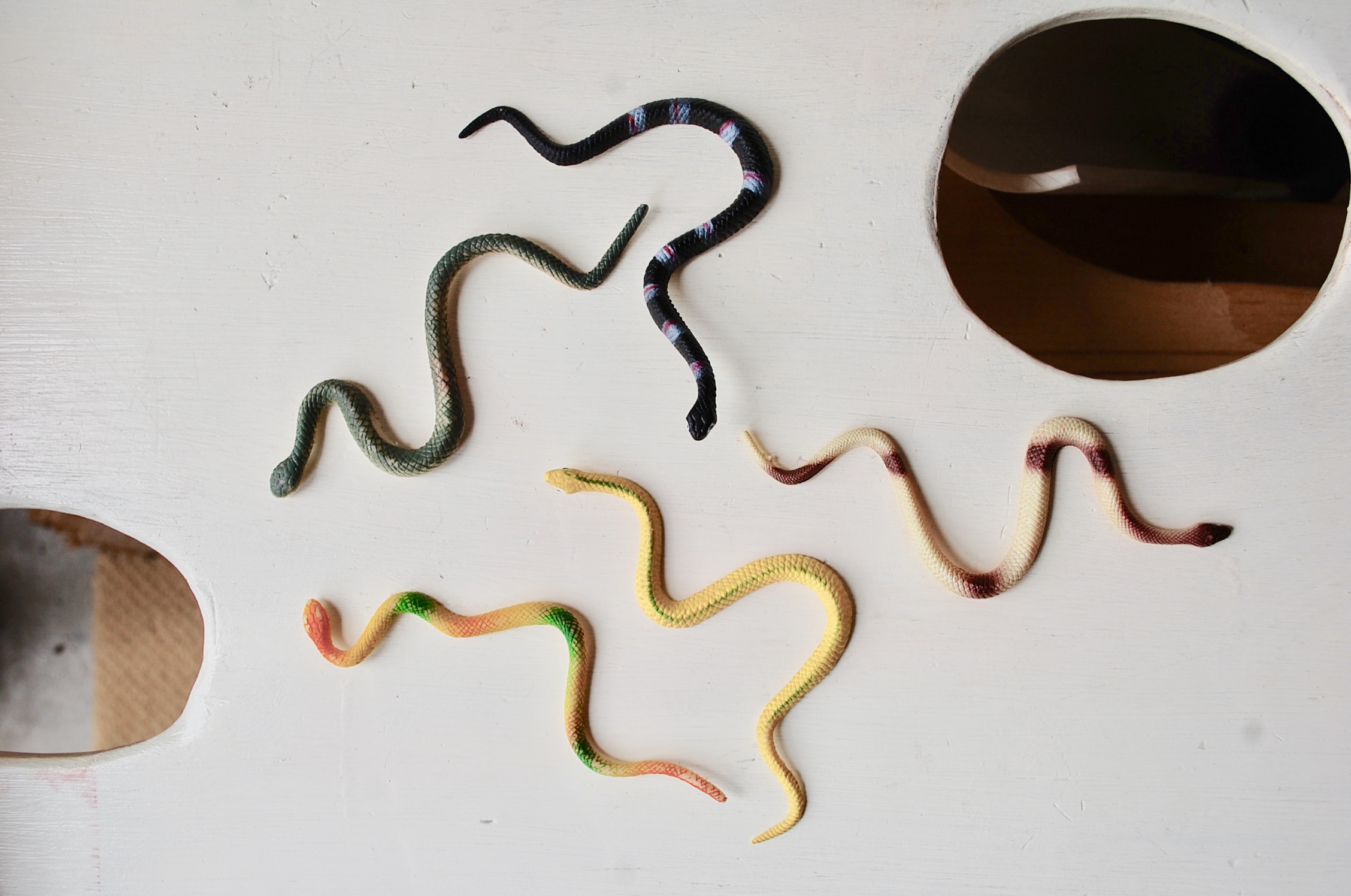
These curvy snakes have wiggled their way into our play in a number of ways . . .
Here is what we (the teachers) did:
Having read a number of books in which birds, snakes, and worms were featured together, we thought the snakes could also provide a natural extension of their dramatic play.
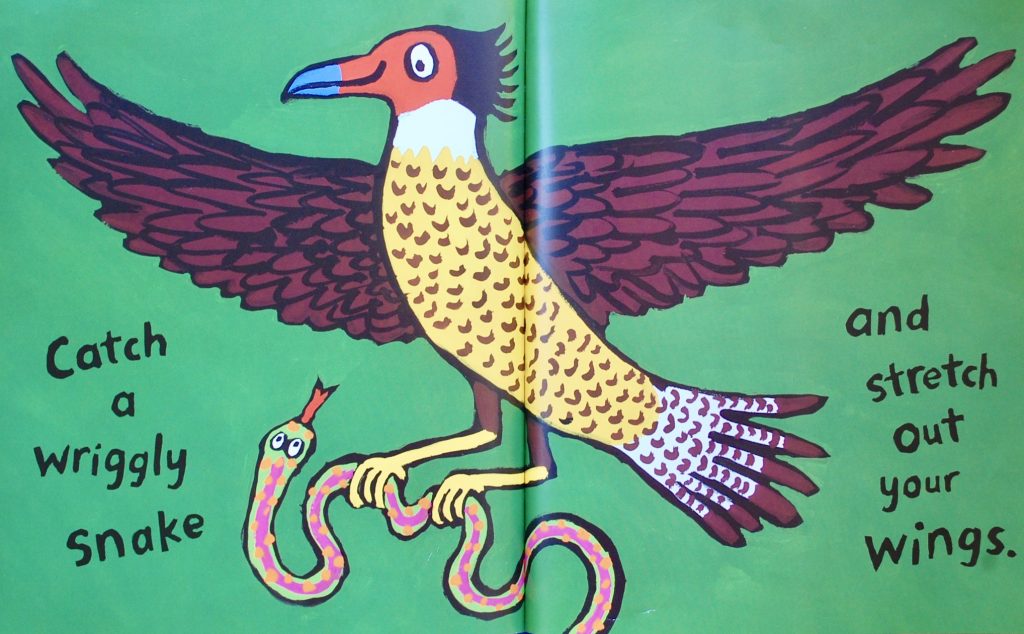
Here is what the children showed us:
J balanced a snake on another snake, holding them out in order to pass the snake to Diane. W and K noticed this and were “hooked”! They immediately began experimenting with hooking, learning about balance along the way: Why does a snake sometimes balance on another snake and sometimes not?
The children also showed us...
…that they were watching each other figure out how snakes hook together. The children are learning how to learn, and learning how each other learn.
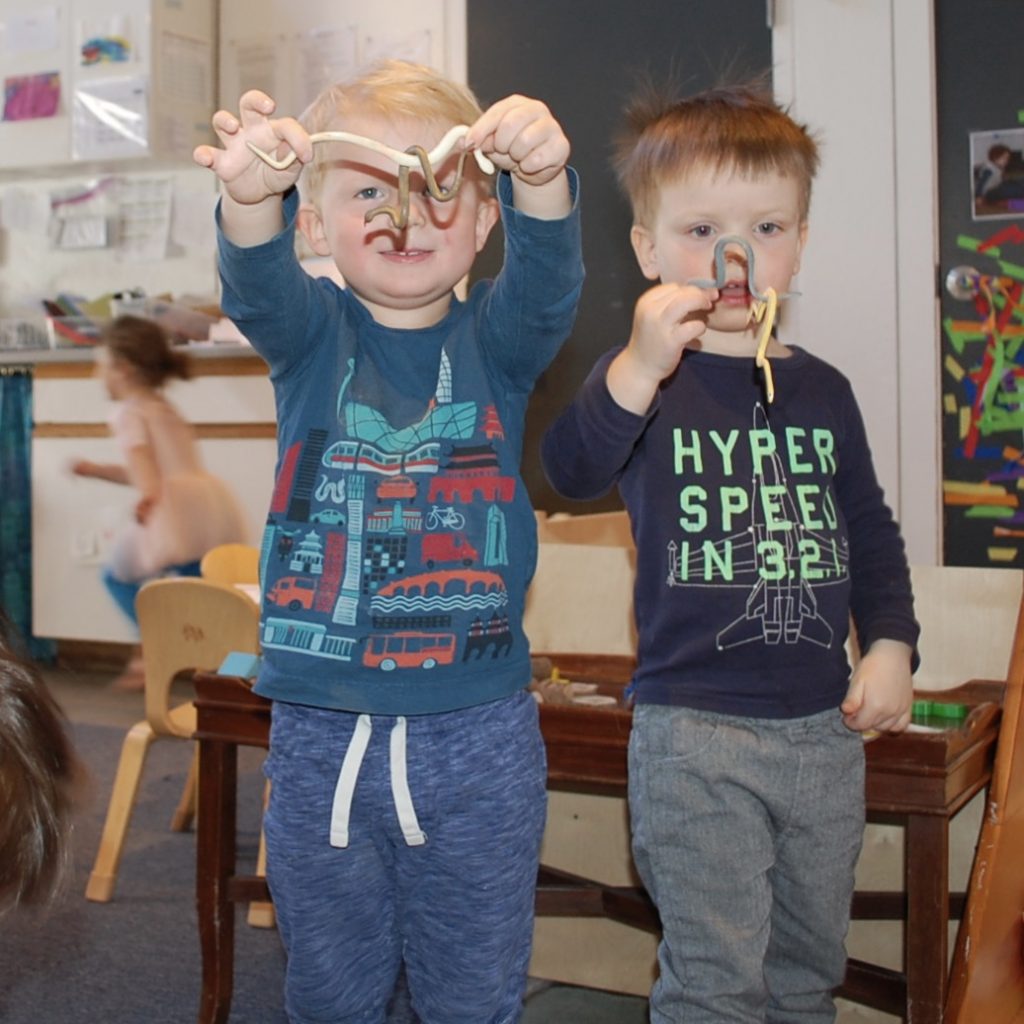
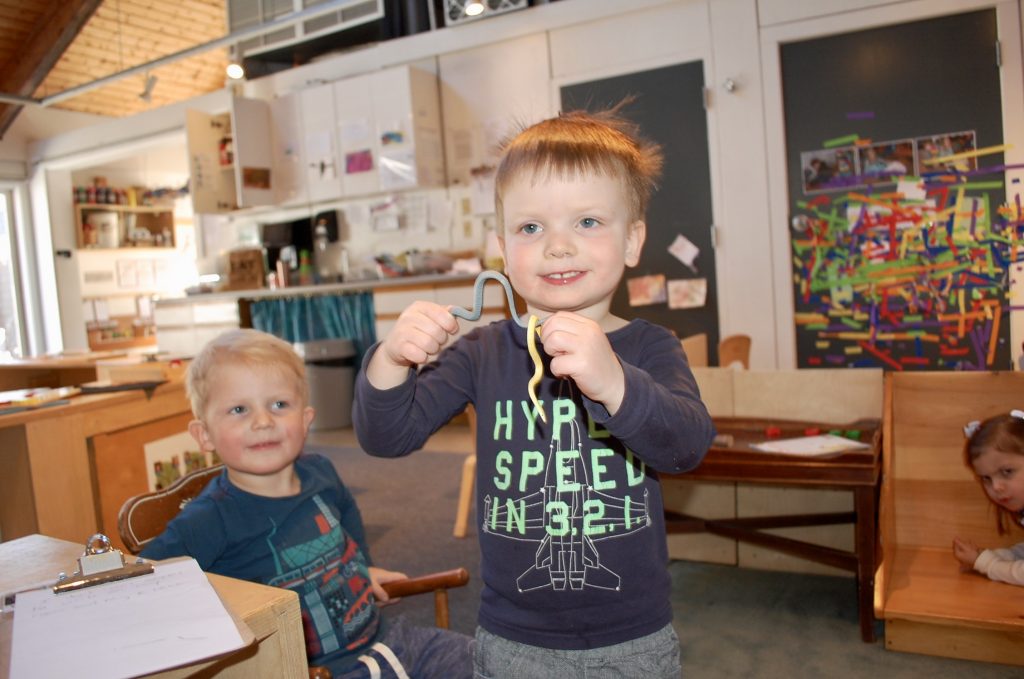
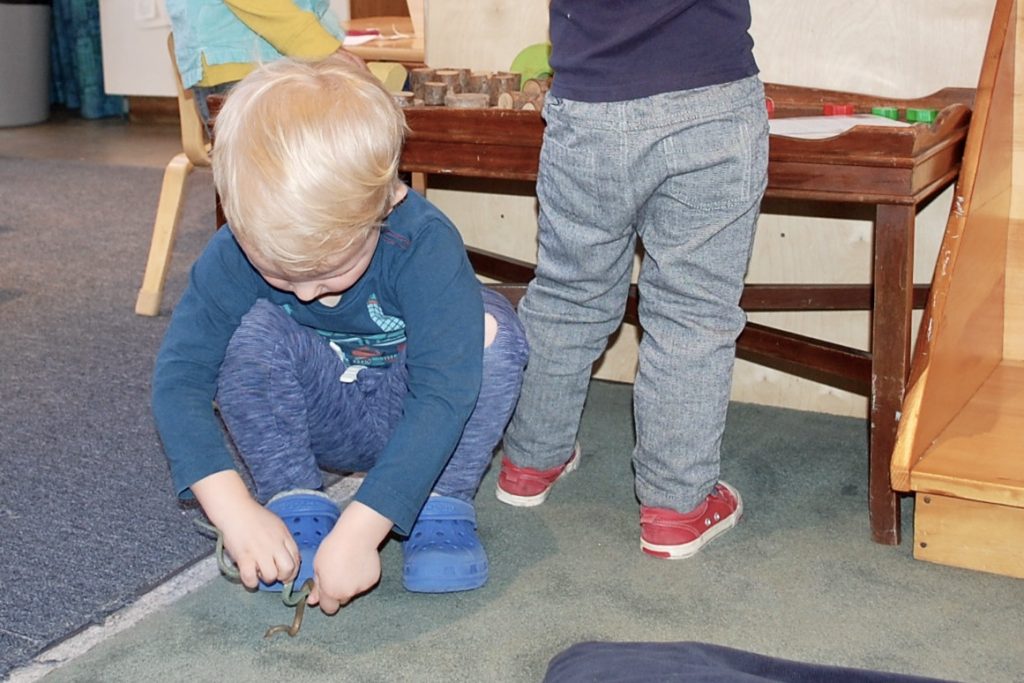
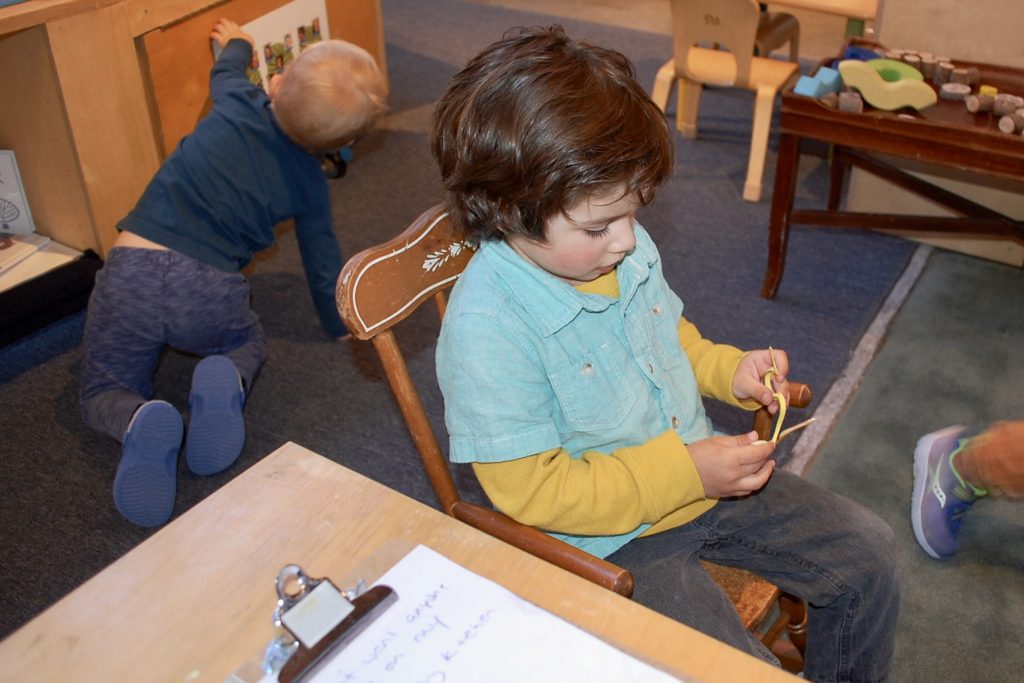
We remembered:
Children had debated passionately whether the worm in this book was actually a hook! So we had observed them expressing an interest in both worms and hooks.
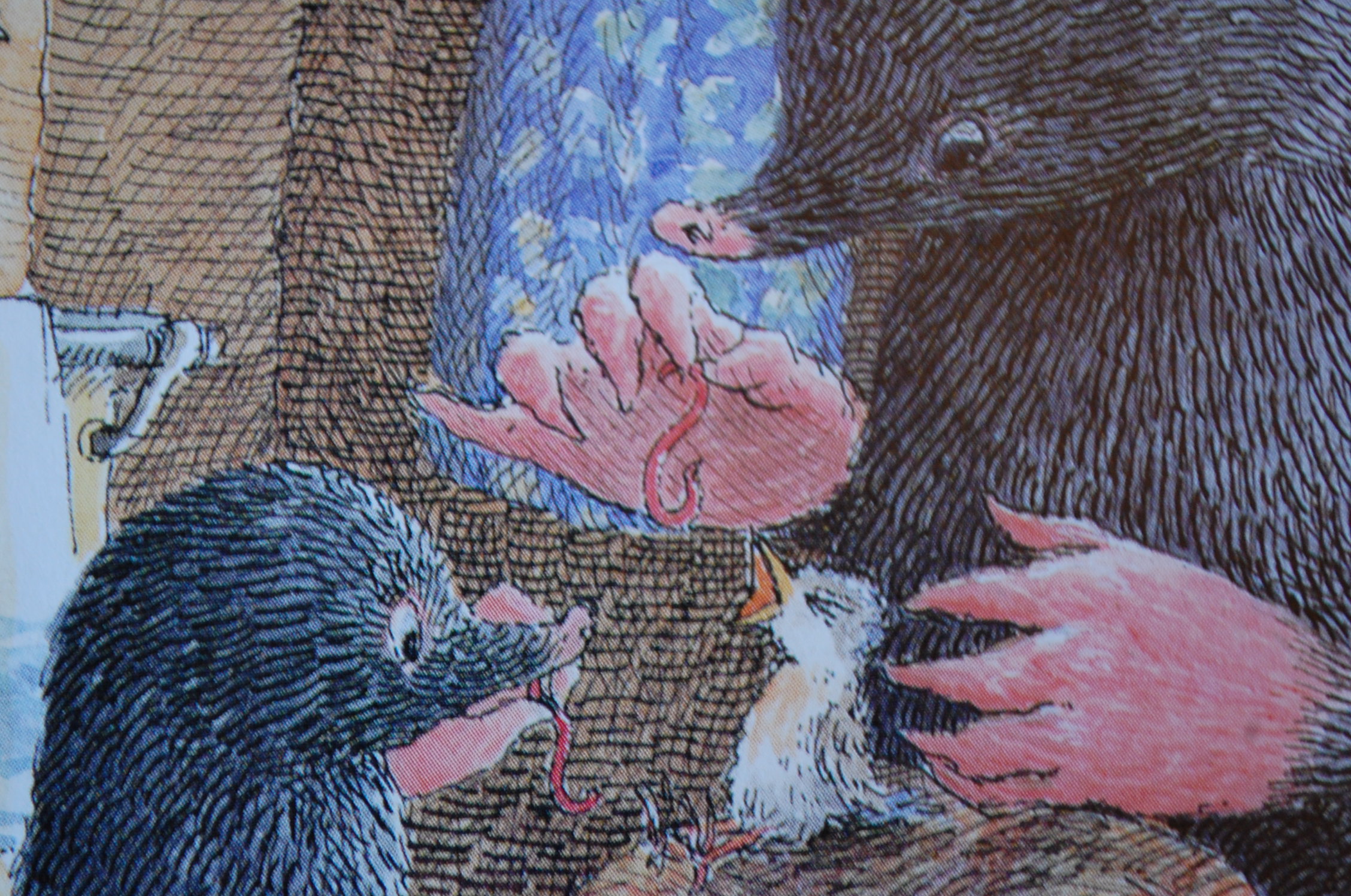
We brought this to the class:
Every day this week at meeting time we tried out making hooks with our fingers (often hooking our finger to another person’s finger) and then handed out fabric-covered wires to see how these might be bent into hooks. Then the children all attached their hooks to the teacher’s hook. Interestingly, despite their enthusiasm for this activity, it has not transferred to the wire at the playdough table, which remains primarily a tool for poking into playdough or for being used as candles on a birthday cake, which may become an engineering experiment to see why sometimes the wires stay up and sometimes fall over.
We noticed some children exploring transformation:
The children often gain familiarity with a material through imaginative transformation: In the process of making a hook, S noticed her hook also looked like a door, and then a footprint; W’s became a mask. They are acquiring the ability to simultaneously view a worm as a hook, or a hook as a worm – or a door, footprint or mask.
What are the children learning?
Children are developing an awareness of factors that influence whether things fall or not, due to balanced weight distribution. They are also gaining flexibly in their thinking: something can be two or more things at once.
Wait! What happened with snakes and dramatic play?
We were still interested in how the children might use the snakes in dramatic play.
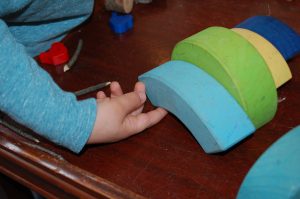 We initially introduced curved blocks to this table (along with the snakes), wondering if the children would create bridges for the snakes to crawl under (as they showed us with their bodies and toys, in the photos at the top of this post), and we observed some interest in this.
We initially introduced curved blocks to this table (along with the snakes), wondering if the children would create bridges for the snakes to crawl under (as they showed us with their bodies and toys, in the photos at the top of this post), and we observed some interest in this.
Then we moved the snakes to the table with holes in it and half-pipes underneath. Since their birds were nearby, would they connect the birds with the snakes, perhaps taking a cue from the books we had read about birds, snakes, and worms (e.g., “catch a wriggly snake” from Hooray for Birds at the top of the post)?
Here’s what J, E and S did here (with Mark) and how the directions it took from there.
On Wednesday, J begins her play in this area just after dropoff:
J piles up the snakes: They need to be together, then sends them down the pipes, one by one, with a Wheeee!! E comes by. They slide down the slide, J explains, and E sends one down, too, then asks, You got any more snakes?
(Mark: I think we have to get them under here…)
J says, They walk up the slide, as her snake slithers back up.
S arrives, and Mark asks, Would you like a snake? Here’s a snake for a slide.
J: Well I got a slide.
S crawls under the table, looking for snakes. E’s snake hisses, and Mark’s hisses back to E’s. E’s snake slithers over to one near J.
E (talking for the snake): I love you, Mommy. She brings over another snake, who replies, I love you, sister. She brings them over to a slide: We’ll go down the slide.
J grabs some snakes on the table. No, those are mine, S objects, and J gives them back, saying, I want some, S. S immediately gives J two and then another: So you’ll have the most, S says, smiling. She gives one of hers to Mark, then gives one more of hers to J. Now S has only one snake. She says to J: You get the most, ‘cause we only need one.
J turns to E: E, I saw L!! and E runs off to greet her.
Mark’s snake hisses to S’s snake and says, Hi, snake, and S’s snake replies, You can be my dad snake. I can be your dad snake? We can hug.
J’s snake slithers over. S says, She can be the sister. The snakes go down a pipe together.
S takes her clipboard off the wall: I’m going to draw a snake, she announces, grinning. After drawing a squiggle for the snake, she adds a line all around the snake. This is where the snake went. She picks up a snake and holds it up high: And this snake can fly. Wheeeeee. Then S returns her clipboard to its place and returns to a pile of snakes on the structure. She starts sorting them by color. You (Mark) can have all the dark snakes. Me can have all the light snakes. And J can… (inaudible)
J sends a snake down a hole, saying, This is the diving board. (She is referencing a book about a diving board that she had just read with Diane: Jabari Jumps.)
S is still inspecting the snakes, trying to figure out how to categorize which are dark and which are light when some have both dark and light on them, and after a bit, she and J leave the snakes and move to the playdough table. S picks up a wire and curves it.
Mark asks, Are you making that wire into a snake?
Yes. She gives a wire to Mark. You make one into a snake. She gives a wire to J, too. Suddenly the snake theme is over, and their play turns to food: cake and pancakes. When Mark makes a snake, neither girl responds.
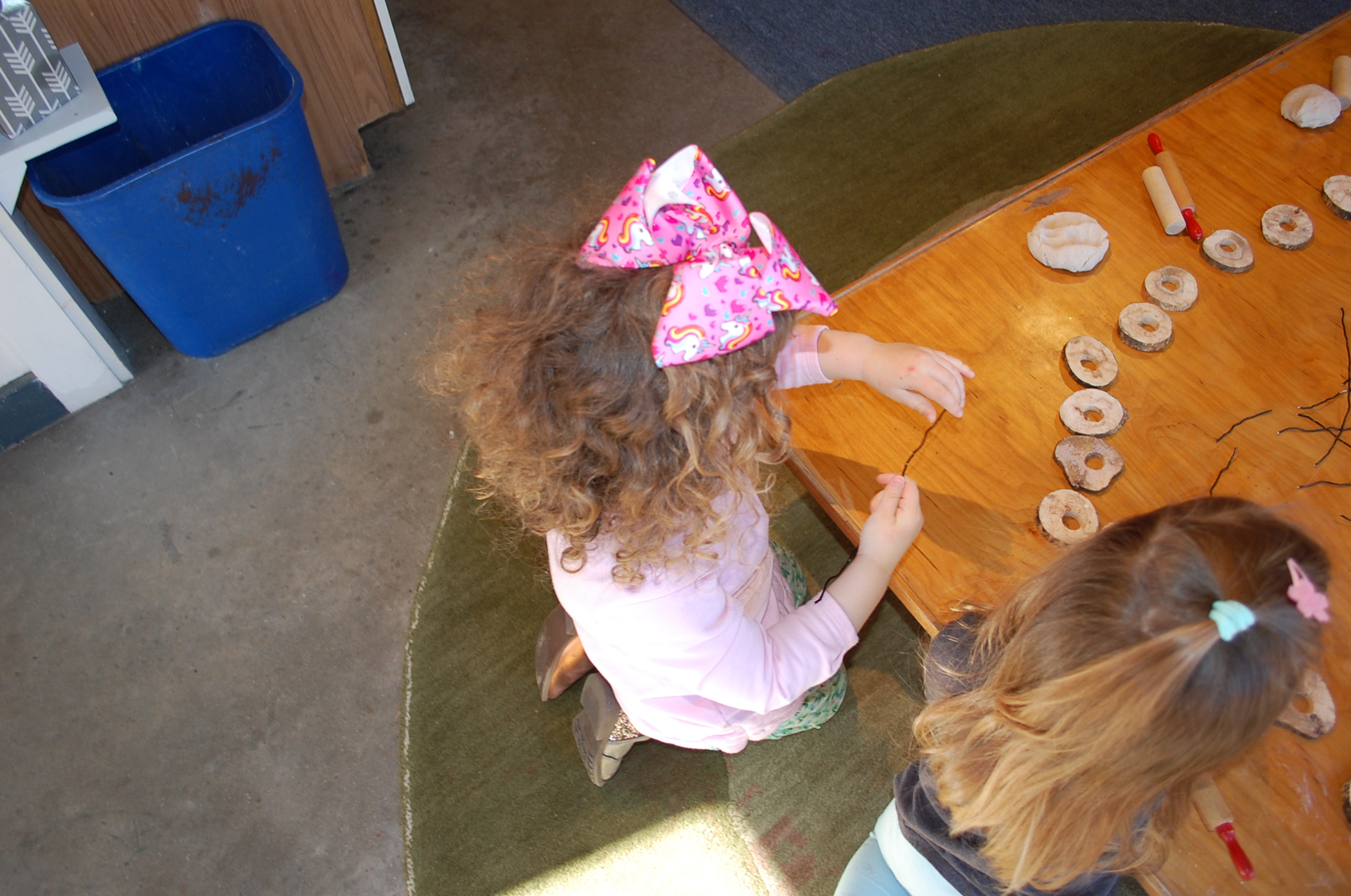
The next day, H and J spend time here.
H arrives first and wriggles the snakes across the structure and up and down the pipes, much as he had done with his bird on a previous day. Soon J comes over, and she discovers a log underneath with a hole through it. She pulls it out and puts some snakes inside. It’s their house, she says. It’s night time. After she heads off, H continues playing with the snakes on the structure, as he talks and hisses for them. Then he crouches down to the log on the floor and takes some snakes out. They wake up. He invites Mark’s snake to join them: You want to come with us, he directs. The snakes go back to the table and down a pipe.
At some point during this play, Mark tells H how other children had figured out that snakes could be used to hook each other together, pointing to the documentation on the wall (the photo of J and W at the top of this post), and H is briefly interested in this and tries it out before moving back to the dramatic play.
Before leaving the area, H rolls his body over the top of the log!
